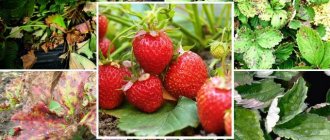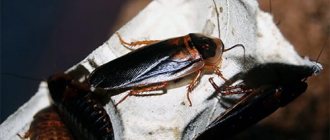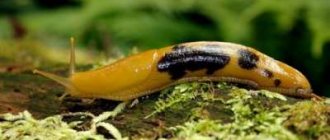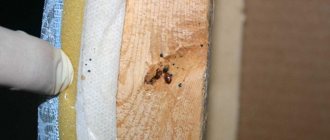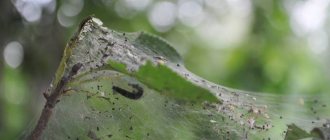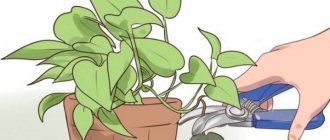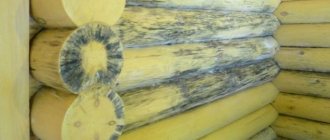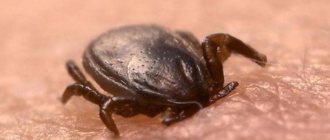7054
With the onset of summer, many pests appear in the garden that can cause significant damage to fruit plants. These include leaf rollers, spider mites, and scale insects. Aphid colonies on currants cause particularly harmful damage, so you need to figure out how to deal with them in advance. You can recognize her visit by curled leaves, characteristic swellings on them, and premature drying of the crown. In addition to the main damage, aphids lead to infection with vector-borne infections.
The harmful effects of aphids can be seen by curled and swollen leaves.
Types of aphids, and what harm they cause to currants
Aphids belong to the order Homoptera and have piercing-sucking mouthparts. There are many varieties of small and voracious insects in the garden, but two types of aphids live on currants:
- gooseberry (shoot) - affects shrubs with black berries;
- gall (leaf) - prefers white and red currants.
The peak time for aphid settlement is from May to June; the colony parasitizes berry bushes all summer. The lifespan of an individual is short, but due to lightning-fast reproduction, the aphid manages to change 10-15 generations per season.
Insects cause a lot of trouble for gardeners. With severe damage, pests are able to drain all the strength from the bushes. Dry, hot weather is especially favorable for them, and if the summer is dry, the fight against aphids on currants continues throughout the season.
Read more about the types of aphids and the dangers of each species in this article.
Gall aphid
The full name of the pest is red gall apple aphid (Rhopalosiphum insertum). The population contains winged and wingless forms. Biological description of gall aphids:
- the average size of an insect without wings is 2-2.6 mm, a flying aphid is smaller - 1.5-2.1 mm, the shape of the body is oval;
- color range includes green, yellow-green and dark green base color with a brownish stripe along the back;
- on the back of the abdomen there are two cylindrical tubes-siphuncles, the head is equipped with 5-6-segment antennae.
At the end of autumn, the female lays eggs in the bark of apple trees (less commonly, other garden trees), and already in April, sexually mature individuals with wings appear. The pest quickly flies to green bushes. Gall aphids are first discovered on currants in May, and here it is necessary to treat the berry garden as quickly as possible.
Important! Aphids are characterized by polymorphism. That is, insects living in the same space differ in appearance and parasitic behavior. There are even more differences between individual colonies and subsequent generations. This feature leads to high vitality.
Gooseberry (shoot) aphid
Gooseberry aphid (Aphis grossulariae) is one of the most dangerous types of currant pests. The name speaks for itself: the insect attacks both currants and gooseberries. If shrubs are adjacent, the likelihood of each being affected increases.
Morphology of shoot aphids:
- reaches a length of only 1.5-2.2 mm (asexual virgin individuals appearing in the spring do not reach even a millimeter), the body shape is a wide ellipse;
- the slightly transparent yellow-green or green color of gooseberry aphids makes the insects almost invisible: on the foliage of the currant bush they look like jelly balls;
- six-segmented antennae are equal to ½ of the pest’s body, abdominal siphuncles are comparable to the tail, adult specimens are covered with microscopic hairs.
Gooseberry aphids come in two types: wingless or winged. The first is busy with the propagation of the generation, the second with the colonization of fruit and berry plantations and changing the host plant. On currants, gooseberry aphids begin to cause damage during flowering.
Important. In spring and summer, several viviparous generations of the pest appear with same-sex reproduction (without mating). Only in August does the generation produce full-fledged males and females. These individuals lay eggs in the bark of trees, on branches and currant shoots that can survive the harsh winter.
How to treat aphids - effective drugs?
Currently, the store sells many aphid medications. First of all, they differ in the principle of their action (contact, contact-intestinal insecticide). The main active ingredient of the drug (imidacloprid, permethrin, malathion, aversectin, thiamethoxam, neonicotinoid, etc.) depends on this.
You need to choose a drug based on its duration, the number of necessary treatments, effectiveness, and danger to the crop itself and bees. For example, when using Fufanon, you need to be aware that it kills all insects indiscriminately. Therefore, when purchasing a product in a store, carefully read the instructions.
The most effective drugs in the fight against aphids: Iskra, Tanrek, Aktara, Biotlin, Senpai, Fitoverm, Trichopolum, Aktofit, Alatar, Komandor, Jaguar, Strela, Iskra, Karbofos, Zubr, Konfidor, Warrant, Cruiser.
Signs of damage to currants by aphids
The currant bush opens its buds early, and a good shelter with green food supply appears for the overwintered aphids. Pest parasitism can be suspected based on general signs:
- curvature of petioles, cessation of growth and development of currant shoots;
- shortening of internodes;
- winter death of damaged plants, delayed bud break in spring;
- a slowdown in the overall development of the currant bush, a decrease in yield and a deterioration in the quality of berries.
A characteristic manifestation of gooseberry aphids in black currants. On the apical part of the bush, curled shoots and twisted leaf plates are clearly visible. The affected sheets bend downward and inward. The ovary looks like a lump of greenery, inside of which a colony of insect pests lurks.
What does a red or white currant look like when affected by gall aphids? Red bumps, swellings and spots are noticeable in the central part of the leaves. The branches acquire a reddish-brown coating and small growths. Sometimes, due to the bright color of the affected areas, the pest is called the red-headed aphid.
Processing currants during berry ripening
When currant berries begin to ripen, they receive all their substances from the juices of the plant itself. During this period, strong chemical insecticides cannot be used to kill aphids, since the active components enter the currant bush through the pores of the leaves and, together with the juices, end up in the berries. The active ingredients of chemicals are nerve poisons that can have a negative effect on humans. To destroy aphids, you can use the drug "Inta-Vir".
The danger of aphids on currants
The insect population is capable of destroying entire stands of currant berries in a short time. Aphids actively suck juice from berries and leaves, deprive the bush of nutrients, and damage tissue. To avoid the death of plantings, it is necessary to apply a suitable remedy against aphids on currants in time.
During the growing season and fruiting, voracious pests damage unprotected and biologically significant parts of plants. In addition to destroying currant plantations, insect pests carry viral and fungal diseases of berry plants.
Processing time for currants
The minimum number of treatments is 4 times. In summer, spraying is repeated after precipitation. As a rule, this is June. Before the green fruits form, chemicals are used. Over the course of a month, the poison will be gradually removed from the culture. Chemicals are also allowed in the fall. Spraying after harvest helps destroy eggs laid by aphids to infest the next season.
If there are already berries on the branches, traditional medicine is used. They will not cause harm to the human body during the maturation period. Vinegar, whey, vodka, herbal infusions are what is allowed during currant fruiting.
How to cure currant bushes from aphids?
No matter how dangerous aphids are for currant plantings, gardeners, gardeners and farmers have various ways to counteract the pest. Mechanical, natural and special (chemical) methods of currant protection have varying effectiveness. The choice of aphid extermination option depends on the characteristics of the site, the scale of the problem, the type of pest and many other factors.
Mechanical methods of controlling aphids
“Mechanics” involves destroying the pest using improvised means. Types of processing:
- Collecting aphids by hand - used when single individuals appear. The method will not save the bush with a large offspring, and there is a risk of dropping some of the pests unnoticed.
- Washing off with water – use a garden hose to apply strong pressure to the branches where the aphids have settled. After this, you need to treat the soil and bush using one of the traditional methods.
- Scalding with boiling water effectively kills overwintered aphid eggs (this will work if the garden was treated for pests last season). In early spring, as the snow melts, the bushes are poured with a large volume of hot water from a watering can.
- Tearing off leaves and branches that have aphids on them - the “sodden” parts must be burned immediately. Problematic currant bushes will have to be checked throughout the season.
Mechanical treatment helps with early colonization of the pest. In advanced situations, they act using biological methods or select a chemical drug.
Traditional methods of exterminating aphids
It is recommended to fight aphids on currants with folk remedies in case of moderate pest infestation. If the ecological recipe is used correctly, there will be no need for chemicals on the site. Practice-proven methods are based on pollinating bushes with herbal powders or spraying plantings with solutions.
Important. Protecting berry fields with natural compounds involves several stages of using the chosen method. A slight violation of the frequency, timing and recipe - and the aphids return.
Using tobacco against aphids
The simplest treatment of currants against a dangerous pest is spraying with tobacco dust. Used as prophylaxis in early spring. The product is effective against gall aphids.
If the pest is found on a bush at the beginning of the growing season, a liquid concentrate is prepared from tobacco. 100 g of dust is dissolved in 1 liter of warm water, add 50 g of laundry soap. The composition is brought to a boil in a water bath and removed from the stove. 300 g of broth is dissolved in a 10-liter bucket and the bush is sprayed with the working solution. Treatment of currants is repeated 3 times at intervals of 2-3 days.
Infusions against gall and gooseberry aphids
Liquid poison is infused with herbs and green agricultural mass. crops, ash. Properly prepared, they will effectively protect currants from many pests. There is only one condition - the infusions cannot be prepared for future use: their maximum shelf life is 2-3 days, and then the strength of the “potion” decreases.
Important. For a long-lasting effect, a course of 3-4 treatments will be required. To fix the active substances and stick pests together, add 50 g of crushed laundry soap to 10 liters of any infusion.
Infusion of marigolds
The infusion effectively fights gall aphids. To obtain the product, pour half a bucket of crushed flowers and green mass of the plant with 10 liters of water. Leave for 3 days, filter the prepared solution through gauze.
Mustard infusion
To get rid of aphids on currants, an infusion is prepared from mustard powder. 15 g (1 tablespoon) of raw materials are diluted in 1 liter of water and kept in a warm place for 2 days. Before use, the volume is adjusted to 5 liters. If the pest has tightly adhered to the currants, the proportion of the infusion is 1 liter per 20 g of powder. This composition will also poison the leaf roller butterfly, which is often adjacent to aphids.
Pine infusion
A kilogram of pine needles (preferably pine) is poured with 5 liters of boiling water and left for 7 days. For preventive use, the concentrate is diluted to 10 liters; in case of a massive aphid infestation, problematic currant bushes are sprayed with a concentrated infusion. After treating the bushes with a diluted product (ratio 1:5), the soil under the currant plantings is treated.
Onion peel infusion
Onion infusion is a lifesaver if you need a quick and guaranteed effect. It helps well against gall or gooseberry aphids, and can be used during the fruiting period of currants. In addition to getting rid of pests, it saturates berry plants with useful substances.
Preparing the solution is a hassle: 200 g of husk is placed in a zinc bucket and poured with 10 liters of boiling water. They form a “bath” - place a large pan on top of the bucket with the solution and wrap it well. Leave for 10-15 hours. Infected currant bushes are sprayed with undiluted infusion.
Infusion of potato or tomato tops
An infusion of tops of nightshade crops (primarily potatoes and tomatoes) removes all types of aphids. It is also an excellent help against codling moths, sawflies and mites. The harmful effect of the infusion is given by toxic salonin in the composition of potato and tomato tops.
Preparation: 4-5 kg of green mass are poured into 10 liters of water, simmer over low heat for 30-40 minutes. Soap is added after cooling. Before spraying, the concentrate is diluted with water in a ratio of 1:5.
Ash infusion with wormwood
The infusion is quickly prepared, and therefore good for urban summer residents. Dosage: 500 g of wormwood, 300 g of wood ash and 50 g of soap. The ingredients are poured into 10 liters of water and left for 5 hours. After filtering, the solution is diluted halfway with water.
Infusion of celandine
If there is any doubt about the type of pest, celandine will help. The ubiquitous weed effectively exterminates both gall and gooseberry aphids. However, such an infusion should not be used when fruit ovaries appear on currants.
Pour 3-4 kg of freshly cut grass into a 10-liter bucket and leave for 12-15 hours. Be sure to strain the finished infusion before spraying.
Attention! You can only fight aphids with fresh celandine. Dry grass is useless because its content of alkaloids toxic to pests is negligible.
Horse sorrel infusion
Only the roots of a wild plant are effective against aphids: the death of pests is caused by tannins (8-17% of them in rhizomes), alkaloids and anthocyanins. An infusion of horse sorrel is used in the spring to prevent gooseberry aphids, and in the summer they spray the affected currants.
How to cook. For 400 g of crushed roots, take 5 liters of water. Steam the mixture in a water bath for 3 hours - do not allow it to boil. Remove from heat, wrap and leave until cool. For preventive spraying, the infusion is diluted by half; a concentrate is suitable for ridding currants of aphids.
Note! The peak content of toxic substances in rhizomes in the fall is the best time for harvesting. When moisture evaporates during the drying process, the percentage of active components increases, and the infusion from such raw materials will be as effective as possible.
Soap solution
In everyday life, by soap solution, gardeners mean any alkaline composition. To obtain the drug, add 3-4 tbsp to 1 liter of water. spoons of dishwashing detergent, washing powders, liquid or grated laundry soap.
Tar soap gives a good result in case of severe damage to plantings. A 100-gram piece is dissolved in 10 liters of water and sprayed onto the plantings. The pungent smell of tar repels pests.
Another effective remedy is a soap-soda solution. Dissolve a piece of laundry soap in 4-5 liters of hot water and add 4 tbsp. spoons of soda ash. In the absence of rain, treatment for 2-3 weeks prevents the appearance of aphids.
Fumigation of currant bushes
Close to the currant plantings they burn objects that do not so much burn as smolder. These are rubber, caoutchouc, tobacco, raincoat mushroom. Plumes of acrid smoke destroy ripening eggs and colonies of aphids, the smell of burning and ash residues repel new pests.
Fumigation of currants is carried out on a cloudy day in calm weather. A piece of suitable material is placed in a pan or flask and set on fire. To prevent active combustion, cover the container 2/3 with a lid. The “device” is placed under the currant bushes for 2-3 hours.
Important. Success directly depends on the time of fumigation. It is optimal to process currants when the buds are swollen, shortly before they bloom, and this moment must be caught.
Milk and iodine
The composition helps to get rid of any type of aphids on currants. A liter of cow's milk is diluted with 10 liters of water, then 5 ml (1 teaspoon) of iodine is added to the mixture. Soap is not used: milk fat acts as a protective film. It is important to observe the dosage of iodine, otherwise you can burn the currant foliage. Milk can be replaced with whey. In this case, 50 g of birch tar soap is added to the ingredients.
Iodine-milk treatment is a good leaf-based fertilizer. The mixture contains amino acids, calcium and phosphorus. During the season, the treatment against aphids is repeated 3-4 times, and in the fall the currant harvest will delight you with large juicy berries of a rich color.
Wood ash
Sift ash in an amount of 300-400 g, add 5 liters of water and boil for 15 minutes. Strain the cooled mixture through cheesecloth and use it to spray the bushes. Aphids will not appear if you water the currants with the solution during the active growing season.
Vodka for aphids
The mechanism of vodka’s effect on the pest has not been studied, but the experience of gardeners is positive. Currant leaves are sprayed from the underside, vodka is first diluted with water in a ratio of 1:4. If you add milk, the bush will not only get rid of aphids, but will also receive additional nutrition.
Vodka against aphids - Effective folk recipes
Green soap
The biological product is based on purified water, natural fats and plant components, and potassium salts. Preparation: 250 g of soap are dissolved in 10 liters of water. When spraying currants, green soap envelops the body of the aphid, and air access is stopped. A protective film appears on the leaves, breathable to currants and destructive to aphids.
Boric acid
Boric acid powder is used on berry fields, vegetable crops (cucumbers, tomatoes, zucchini), and fruit trees. An aqueous solution is prepared for aphids on currants: ½ packet is dissolved in a 10-liter bucket and the bushes affected by the pest are sprayed.
Garlic
Preparation: dilute 300 g of chopped garlic with a liter of water and leave for 3 days in a dark place. To prevent the concentrate from burning the leaves, it is diluted: 50 ml of garlic infusion is used per 10 liters of water. The product copes with huge colonies of aphids (currant plantings are completely treated).
Soda
The product is sprayed on shrubs during the period of bud setting. Since soda does not accumulate in the berries, it is used during flowering and fruiting.
Sodium bicarbonate destroys aphid eggs in tree bark, damages the shell and corrodes the body of the insect. Preparation: 3 tbsp. add spoons of baking soda to a liter of warm soap solution. Complete disposal of aphids using soda occurs in 2-3 weeks.
Vinegar
A weakly acidic vinegar solution is destructive to pest eggs, but adult aphids are also afraid of acid. Vinegar is used at any stage of the growing season. Preparation of the concentrate: pour 200 ml of table vinegar into 1 liter of water, rub in 50 g of soap. To spray currants, 1 part of the concentrate is diluted in 9 parts of water.
Special preparations against aphids on currants
With heavy colonization of shrubs, when several types of aphids are parasitizing, chemistry is used. Just don’t spray dichlorvos on the bushes. The latest generation of drugs are effective against a range of pests, including gall and gooseberry aphids. They are safe and provided with detailed instructions for use.
Nitrophen
Fungicide and insecticide of contact action. Destroys aphid eggs. It is used when sap flow freezes in currant bushes: in late autumn and early spring.
Aktara
Insecticide with a broad spectrum of protection. It is used against aphids at any time during the growing season. Dosage: 8 ml of the drug per liter of water. The pest dies 3 days after treatment; after 14 days, spraying is repeated.
Tanrek
The poisonous substance is imidacloprid (200 g/l). The insecticide has an intestinal-contact effect on aphids. First, the central nervous system is affected, then paralysis and death of the pest occurs. The protective period is 30 days. In the case of root absorption, it enters the leaves, but does not settle in the currant fruits. Compatible with bio-insecticides (bitoxibacillin), fungicides.
Kinmiks
Insecticide of contact-intestinal action. The active substance is cypermethrin (5%). Destroys mature aphids and pest larvae. Does not accumulate in fruits, decomposes in soil in 7-10 days. For household spraying of currants, bottles of 10 ml and ampoules of 2.5 ml are offered. Dosage – 2.5 ml per 10 liters of water.
Aktellik
Universal insecticide and acaricide. The active substance is piremiphos-methyl. For aphids, use no later than 20 days before currant harvest. Spraying: Actellik ampoule is diluted in 2 liters of water. An increase in dosage is allowed. The death of aphids begins after 2-3 hours; on the 4th day the berry fields are completely cleared.
Karbofos
Insecticide and acaricide. For aphids on currants, it is used three times: when the buds are swollen, when flower clusters begin to set, 30 days before harvesting the fruits.
Fufanon
The organophosphate preparation is available in 10 ml bottles and 5 ml ampoules. The active ingredient is melation. 2 hours after spraying, aphid paralysis occurs, and on the second day the colony dies. It is active on currants for 7 days, after which the treatment is repeated.
Biotlin
The insecticide is based on imidocloprid. The death of pest eggs and the first aphids occurs 4 hours after application. Protects plantings for 21 days. Treatment is carried out in early spring. Combined with fungicides (Bordeaux mixture).
Fitoverm
A modern biological pest control product on a natural basis. It is used even during the fruiting period. The aphid eats the phytoverm and dies slowly (in 3-4 days). Analog – phytosporin. Diluted according to the instructions on the back of the package. The leaves are wetted on both sides.
Important! During currant flowering, the use of chemicals should be limited, since all compounds enter the stems of the bush and end up in the fruits with the flow of juices. During this period, folk methods that are safe for humans are used to control aphids and other pests.
Repellent plants - “hedge” against aphids on currants
Currants grow in one place for decades, and crop rotation cannot be applied to a berry garden. Repellent plants planted around the bushes will help out. They will protect currants from aphids during the period of berry ripening, when it is impossible to treat them with chemicals.
Planted nearby:
- marigold;
- calendula;
- lavender;
- mint;
- garlic;
- coriander;
- sage.
These plants abundantly distribute fragrant essential oils around, which protects the currants. The “fragrant” curtain physically prevents aphid nests from appearing.
Attracting natural enemies of aphids
Natural enemies of the currant pest are:
- ladybug;
- ground beetle;
- lacewing;
- wasp.
Fragrant and nectar-bearing herbs will attract beneficial insects to the garden: buckwheat, dill, anise, parsley, marigolds. If a ladybug has chosen currants, biological products and chemicals should be used carefully. It is better to give preference to folk remedies (insects will get rid of gall aphids without heavy chemicals).
Prevention measures
The main enemy of aphids is not chemicals or herbal infusions. The pest can be defeated through prevention, treatment and regular garden care.
Aphid repellers
Gall and gooseberry aphids are afraid of the smell of herbs and plants with a high content of alkaloids. To repel the pest, it is enough to attach branches of elderberry, oregano, and any honey plants to the currants. Onions and garlic, tomato and potato tops are also used.
How to treat tomatoes against aphids at home, read this article.
Weeding currant plants
You shouldn’t put into practice the newfangled advice “don’t injure the ground with a hoe.” Weeding destroys aphid nests in the soil and raises hidden pests from their hiding places for birds and natural enemies to see. Along the way, the soil is saturated with oxygen, which has a beneficial effect on the ripening time and quality of currant fruits.
Compliance with the rules for caring for currants
It is enough to use the usual rules of currant agricultural technology so as not to suffer with the removal of aphids:
- in the fall, remove fallen leaves, cut out root shoots and shoots on old currant branches (aphids often overwinter here);
- after cleaning the area, weed the root areas;
- ant nests are destroyed with boiling water with hydrogen peroxide and insecticides;
- the base of currant bushes is whitened, branches affected by aphids are removed;
- when planning currant plantings, shrubs are placed away from cherry plum and apple trees - aphids hide in the trunks of these trees for the winter;
- For prevention, the root soil is treated with potassium permanganate.
If pests and fungal-viral infections are detected on the site, measures are taken immediately, otherwise weakened plants will become “prey” for voracious aphids.
scalding
Destroys overwintered aphid eggs. Currant bushes are well poured with boiling water from a garden watering can. This must be done as soon as the snow melts - before the buds appear and the sap begins to flow.
Additional tips and tricks
- When treating currants against aphids with chemicals, personal protective equipment is worn - gloves, goggles, respirators.
- Spraying of bushes is carried out in the evening in dry, windless weather. In case of rain, repeat everything. Particular attention is paid to young currant shoots and the lower part of the leaf.
- They get rid of ants on the site: aphids live in symbiosis with them. The earthen “hard workers” are attracted by the milky secretion of the pest, and the ants actively protect the “breadwinners”, help migrate and “take” the aphids to spend the winter.
- If aphids have chosen cherries, cherry plums, currants and gooseberries, “heavy artillery” is used - chemicals and biological products. There is no point in relying on natural farming.
Aphids are a frequent “guest” in the garden. To prevent the pest from becoming a permanent resident on currants, a triad of measures will help. Spring-autumn prevention of plantings, treatment of diseased bushes, maintaining order on the site. Traditional methods are safe, they often also “feed”, but require consistency. Chemistry is used in case of mass infection of currant plantings, if other methods are unsuccessful.
Chemicals
Specialized chemicals, on the one hand, give the best results, but on the other hand, they tend to accumulate in plant tissues. Therefore, we recommend using insecticides only as a last resort if simpler methods do not help.
By the way, industrial preparations can also be organic - based on pyrethrins, vegetable oils or fatty acids. More drastic measures are often not necessary because the aphid's shell is very soft. Even ordinary soap destroys it quite effectively.
